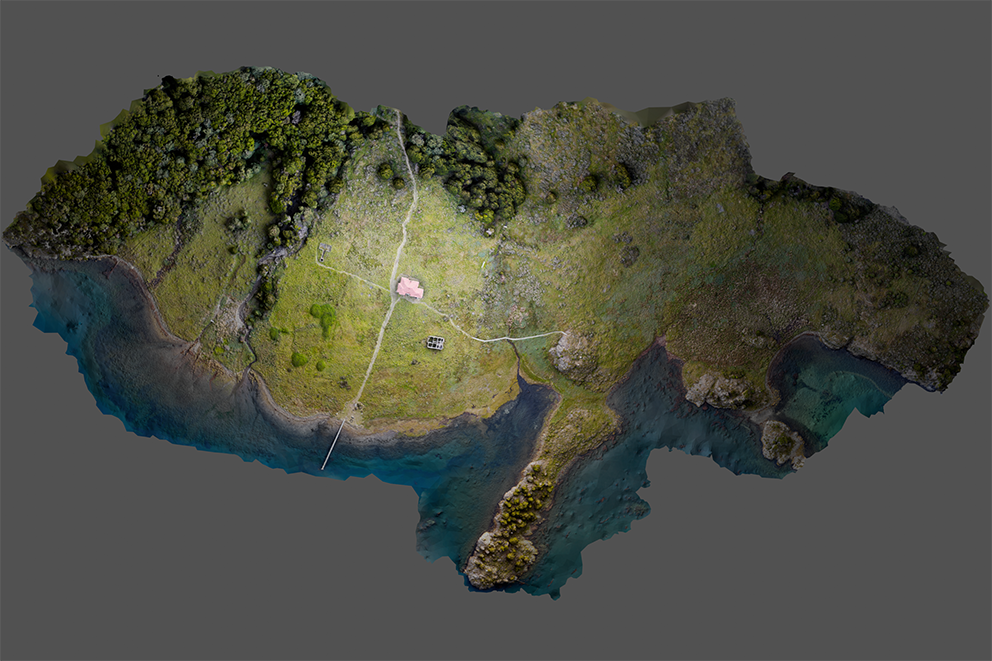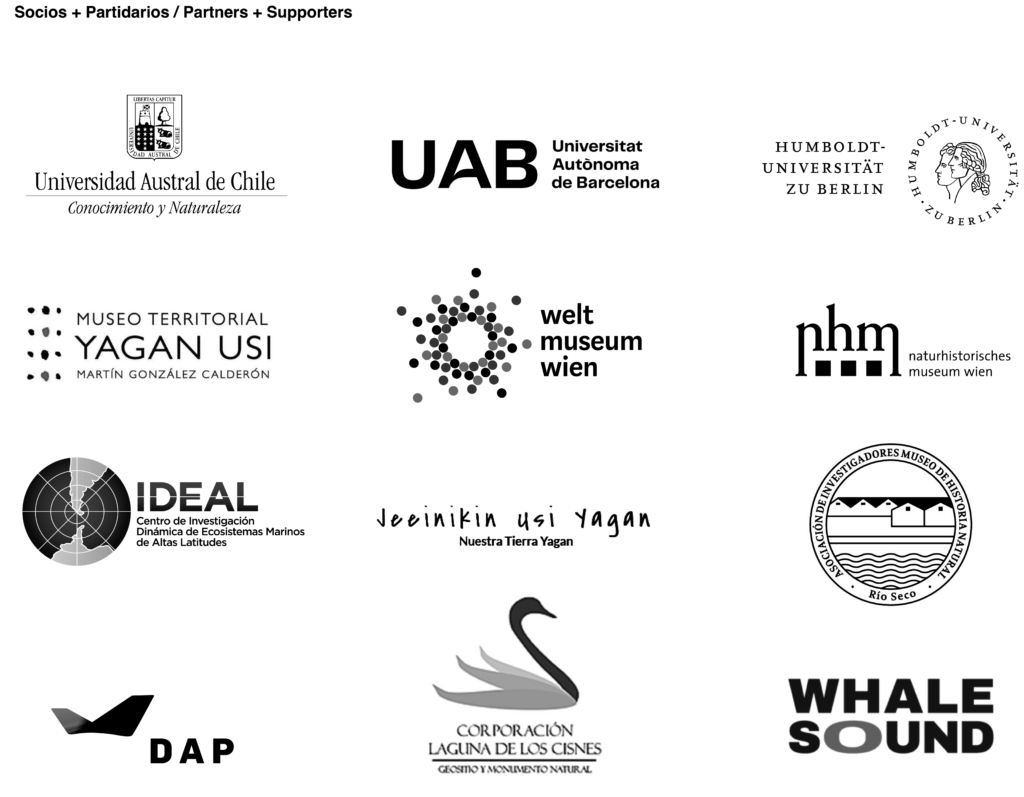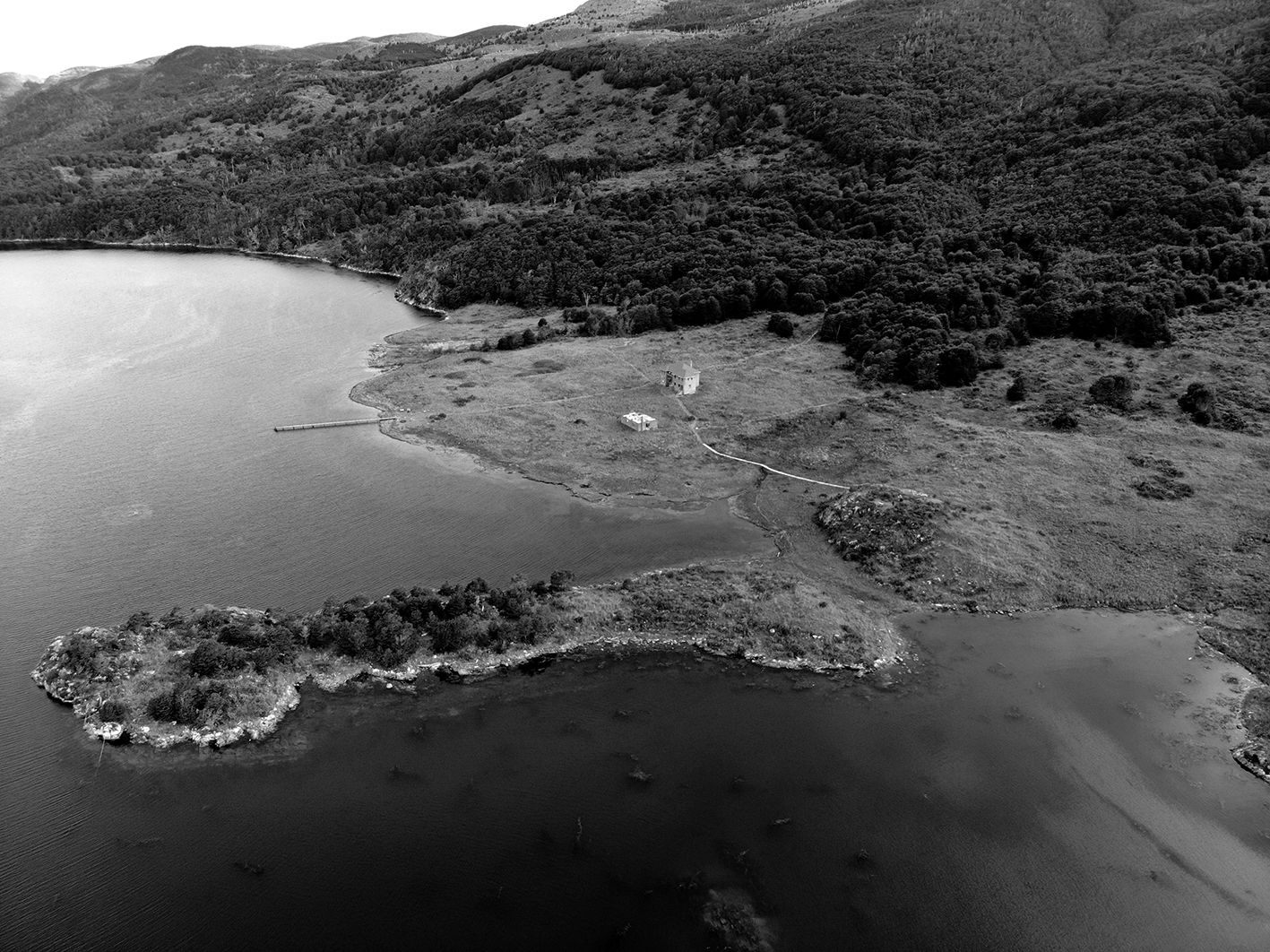> projects / 2026 / caz / Projects / Participants
Research in Bahía Wulaia and Seno Ponsonby
The Cultural Agglomeration Zone project investigates the accumulation of cultural, historical, and environmental layers in Bahía Wulaia and Seno Ponsonby (in the Cape Horn archipelago), considering more than 7,000 years of seafaring nomad habitation. In collaboration with the Austral University of Chile, the project will carry out an extensive study in the Ponsonby area during January and February 2026, with the aim of rethinking the current understanding of human settlement in this region and its expansive historical interaction with the environment.
Indigenous habitation, over prolonged periods of time, is also understood as a sustainable model from which to gauge current transformations in the region. The effects of climate change in Ponsonby can be observed in real-time through precipitation patterns and vegetation as well as the rapid growth in maritime logistics and expanding Antarctic route linked with the politics and economics of the thawing polar region. This increasing global pressure threatens the fragile local heritage and its uniquely rich sub-Antarctic oceanic ecosystem. Ancient forests, lichen cultures, peat- and wetlands, rivers, and marine habitats and migration channels become increasingly vulnerable in a geopolitical zone that has long been shaped by territorial disputes that ignores this ecological fragility.
Non-invasive analysis of heritage sites
The Terra Ignota team will apply non-invasive, cutting-edge archaeological as well as experimental survey methods to document heritage sites and cultural traces including shoreline morphologies, shell middens, culturally modified trees and canoe slipways (see Caleta Wulaia, Historical and Archaeological Evidence for more information on possible traces) as well as a preliminary analysis of underwater ecosystems, morphologies and ambience. Collected data will be cross-referenced with local narratives, historical accounts, maritime practices, and ecological records to generate a vector map uncovering long-term human–environment interactions. Particular emphasis will be placed on agencies of sound in the region, reflecting both the central role of oral tradition in preserving heritage and the importance of voiced communication in environmental navigation as well as specific acoustic conditions of the site facilitating bird and marine mammal communication. Close consideration will also be given to the relationship between early inhabitants and marine mammals—especially the refracted presence of whales in local cultures (see Whale Refractions: Heritage in the Age of Mammals for more details on that aspect of the research) —to decipher the manners in which human/marine mammal encounters informed strategies of subsistence, mobility, and social organization in the Ponsonby coastal region.
Wulaia as a nomadic “megalopolis”
The project conceives of Wulaia not only as a zone of transit, but also as a zone of social aggregation–anomadic “megalopolis”, a center of complex activity where knowledge, remains, and cultural practices from different epochs overlap. It is understood as a center of complex activity where knowledge, material remains, and cultural practices from different epochs converge. The results will include archaeological and environmental records integrated into interactive maps, open databases, and accessible educational resources co-created with the Yagán Community and the Yagán Usi Territorial Museum.
Two dimensions: science and digital art in co-creation
This research consists of two complementary dimensions. On the one hand, a scientific line that, through alternative, collective, and non-invasive methodologies, seeks to rewrite the forms of sub-Antarctic settlement within the broader human project. On the other, an artistic dimension that employs digital tools to layer and visualize cartographic data, generating devices for critical analysis and cultural mediation. This second aspect is oriented toward processes of artistic-scientific and community co-creation, fostering knowledge exchange and the development of open resources and platforms that transcend the academic sphere to engage with diverse audiences in the international arena.
Cultural Agglomeration Zone: heritage and Antarctic future
The Cultural Agglomeration Zone is a space for reflecting on the ways of inhabiting, where past and present layers overlap, promoting the integral preservation of tangible and intangible heritage —as well as a platform for projecting identities into the future — deepening the understanding of settlement, ecosystem relations, and the poorly researched conditions of Wulaia’s seafaring nomads. The timely urgency of this concerted effort, with focussed attention to a fragile ecosystem with little international visibility, cannot be understated in the face of transitions and pressures currently underway redefining Ponsinby as a critical passage en-rout to Antarctica. Please refer to this video for an overview of Terra Ignota’s commitment and approach to this unique corner of the globe https://terra-ignota.net/2025/07/24/antarctic-congresses-2025/


